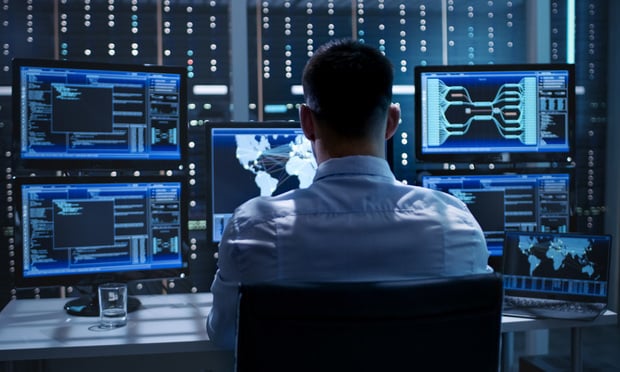Features

COMPETITIVE INTELLIGENCE: Competitive Intelligence On a Dime
Simple and Cost-Effective Ways to Help Your Firm Harness the Power of Competitive Intelligence Many products and trainings promise to help with or automate your competitive intelligence research, but getting good data does not have to be so complicated or expensive. Here are some tips for how you can leverage competitive intelligence in your marketing efforts without a significant cost.
Features

LEADERSHIP IN LAW: Rapid Innovation Is Scary, But Necessary for Law Firm Leaders
To achieve the goal of accomplishing the seemingly insurmountable task of preparing leaders to shepherd firms in the post-pandemic world demands an approach similar to what enabled society to create the COVID vaccine in record time: a unique set of circumstances, dedicated focus and sufficient resources.
Features

Biden Administration Budget 2022: Employer Sponsored Death Benefits a Forgotten Planning Tool
Part One of a Two-Part Article While providing a current benefit for employees, an employer sponsored death benefit is an asset that may create needless taxation if not properly handled. Taking prudent steps will avoid the problems of loss of control and flexibility while minimizing income, estate, transfer and capital income taxes.
Features

Legal Sector Insights: The Current Status and Future of the Law Firm Workplace
Most industries are navigating the effects of rapid forced changes caused by the pandemic. What sets the legal sector apart is that the pandemic served as a catalyst to accelerate trends ahead at lightning speed which have been predicted for over a decade.
Features

Process Automation: Increase Competitiveness By Going Paperless
This last year has brought an ever-increasing pressure to be competitive and retain the margin that pays salaries and powers growth. One outlet to maintain and increase competitiveness is the reduction of paper processes and increasing the use of technology.
Features

Rapid Innovation Is Scary, But Necessary for Law Firm Leaders
To achieve the seemingly insurmountable task of preparing leaders to shepherd firms in the post-pandemic world demands an approach similar to what enabled society to create the COVID vaccine in record time: a unique set of circumstances, dedicated focus and sufficient resources.
Features

Closing the Information Security Gaps In the New Operational Model
In 2020, law firms did what they had to do to continue serving their clients. Information governance may have been sacrificed in the face of an urgent, global crisis. As understandable as that is, it's time now to step back and assess best practices for the new operational model that is here to stay.
Features

Closing the Information Security and Governance Gaps In the New Operational Model
In 2020, information governance may have been sacrificed in the face of an urgent, global crisis. As understandable as that is, it's time now to step back and assess best practices for the new operational model that is here to stay.
Features

Why Untangling the CISO from IT Can Improve Governance and Security Outcomes
Despite the fact that the CISO's duties are growing in scope and importance, and data protection has become a board-level concern, many security leaders still do not have a direct line to the CEO.
Features

Cybersecurity 2020 Year In Review — And A Look Into 2021
A new administration in the U.S., ransomware, ALSPs, new regulations in the U.S. and abroad, and the long-lasting impact of working remotely are just some of the factors that respondents say will factor in to how law firms need to prepare for 2021.
Need Help?
- Prefer an IP authenticated environment? Request a transition or call 800-756-8993.
- Need other assistance? email Customer Service or call 1-877-256-2472.
MOST POPULAR STORIES
- The DOJ's Corporate Enforcement Policy: One Year LaterThe DOJ's Criminal Division issued three declinations since the issuance of the revised CEP a year ago. Review of these cases gives insight into DOJ's implementation of the new policy in practice.Read More ›
- Use of Deferred Prosecution Agreements In White Collar InvestigationsThis article discusses the practical and policy reasons for the use of DPAs and NPAs in white-collar criminal investigations, and considers the NDAA's new reporting provision and its relationship with other efforts to enhance transparency in DOJ decision-making.Read More ›
- The FTC Gets Into the College Athlete NIL GameAs national champions are crowned in men's and women's basketball, hundreds of thousands of college athletes are entering the influencer marketplace for the first time and now find themselves attractive candidates in the fast growing influencer marketing arena. With influencer marketing potentially providing a 5x return on investment, many brands are eager to get into the industry, but it doesn't come without risks as the FTC Commissioner is taking a closer look at the use of influencers for marketing.Read More ›
- The DOJ's New Parameters for Evaluating Corporate Compliance ProgramsThe parameters set forth in the DOJ's memorandum have implications not only for the government's evaluation of compliance programs in the context of criminal charging decisions, but also for how defense counsel structure their conference-room advocacy seeking declinations or lesser sanctions in both criminal and civil investigations.Read More ›
- The Roadmap of Litigation AnalyticsLitigation analytics can be considered a roadmap of sorts — an important guide to ensure the legal professional arrives at the correct litigation strategy or business plan. However, like roadmaps, litigation analytics will only be useful if it's based on data that is complete and accurate.Read More ›
